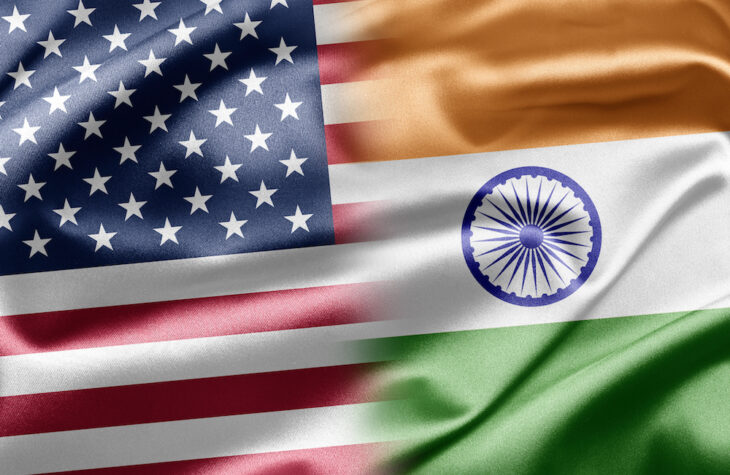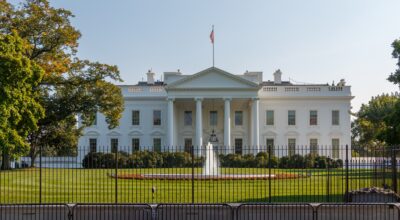
The Forgotten Ally: Reestablishing India as Essential to the U.S. Indo-Pacific Strategy

The Forgotten Ally: Reestablishing India as Essential to the U.S. Indo-Pacific Strategy
Introduction
The rise of China as a great power has completely reshaped the U.S. approach to diplomatic relationships in the Indo-Pacific. Although the U.S. holds bilateral defense commitments and long-standing military partnerships throughout the region, the 21st century challenge posed by China’s military ambitions within the Indo-Pacific sphere is testing existing U.S. relationships and necessitating the opening of new and unexpected partnerships.
It is impossible, in the emerging geopolitical dynamic between the U.S. and China, to ignore or dismiss the role of India. With the 2nd largest military by active personnel and the 3rd largest by defense budget, India’s defense interests and alignment will make a major difference in any future conflict. However, it would be foolish to assume that India will automatically declare that it is unequivocally aligned with the U.S. against China. India’s approach to foreign policy under the Modi government has both expanded India’s presence on the world stage as a serious player that is willing to work with other nations, while at the same time refusing to abandon its own interests in the name of “collective good.” Such a dichotomy throws the U.S. foreign policy and military establishment for a loop because resistance to surrendering national interests for the global collective has been largely absent from U.S. foreign and defense policy since the end of the second World War.
India’s approach to foreign policy provides the best partner for the U.S. to counterbalance China whilst not entangling itself in yet another mutual defense commitment. The U.S. should cultivate its relationship with India to counterbalance China but should not expect India to subvert its interests in the process. This primer will begin by outlining how the U.S. can cultivate a productive relationship with India that serves U.S. interests with the context of India’s current foreign policy ideology. It will then provide an analysis of the state of the U.S.-India relationship, focusing on major challenges. Finally, it will offer recommendations for how policy officials can cultivate a U.S.-India relationship that leverages respective national interests toward shared ends.
Understanding India’s Framework of Strategic Autonomy
India’s dominant foreign policy tradition has centered on “non-alignment,” keeping India out of major global disputes and keeping its relationship with the United States at arm’s length. This tradition was predominantly applied in the Cold War context and evolved into a formal non-aligned movement in which smaller states refused to back the U.S. or the Soviet Union.1 Under the Modi government, the principle of non-alignment has been reimagined as “strategic autonomy.”2 Strategic autonomy, in theory, allows India to engage with regional and global powers but not in any formal alliance structure or group, giving India a seat at the international table but not at the expense of its national interests. Strategic autonomy differs from non-alignment in two ways.
First, the geopolitical environment is such that the dominate world powers in competition for hegemony have changed in such a way that more directly effects India than during the Cold War. India and China have a fraught modern history of clashing dating back to the India-China war of 1962 over disputed territory on the eastern border shared between the two nations. Tensions sparked between the two in 2017, but ignited into actual fighting in 2020 that left military personnel from both countries dead.3 Further, India’s long-standing tensions with Pakistan have made it concerned with the true aims of China’s Belt and Road Initiative. The China Pakistan Economic Corridor (CPEC), a $30 billion investment by China to develop Pakistan’s energy and transportation infrastructure, as well as potential partnership to build a naval base in Pakistan spurred major skepticism in India of China’s military and expansionist aims under the guises of BRI.4 5
Second, strategic autonomy moves India from quasi-neutrality to player at the international affairs table, meaning it cannot avoid making decisions or publicly fighting for its interests on major questions. For example, India is an active participant in the Quadrilateral (Quad) Security Dialogue but has been vocally opposed to formalizing the grouping into an alliance with mutual defense commitments.6 At the Shangri-La Dialogue in London in 2018, Prime Minister Modi affirmed India’s commitment to strategic autonomy particularly in light of discussions of competition in the Indo-Pacific saying, “India does not see the Indo-Pacific Region as a strategy or as a club of limited members. Nor as a grouping that seeks to dominate. And by no means do we consider it as directed against any country.”7 India’s Foreign Minister said in 2020 that India “will never be part of an alliance system.”8
Strategic autonomy, to the centrists and internationalists in Washington, is anathema. The preservation of one’s own security first above that of the regional collective makes India, on the surface, a challenging partner for the U.S., particularly as compared to countries like Japan or South Korea who are comfortable trading a portion of autonomy for security guarantees. However, a longer-term broader view of U.S. aims in the region tells us the goal is to prevent China from amassing regional power and resources to the extent that U.S. interests are threatened. This is the lens through which the U.S. should evaluate its strategic relationship with India, rather than the amorphous ideological agenda that at present does not fairly focus on India as the major asset to U.S. deterrence.
Challenges to U.S.-India Defense Relationship
Three challenges exist in the current U.S.-India relationship inhibiting the scale and success of deterrence capability vis a vis China. First, the current strategic posture of the Quad completely misses the mark on security issues. At its inception, Japanese Prime Minister Shinzo Abe envisioned the Quad not as an alliance but as a “security diamond” of deterrence that naturally exists based on a narrow set of shared interests.9 The Quad has met three times in the span of two years at President Biden’s request. A review of the joint leaders statements following the meetings demonstrate that the group is focused on anything but security issues. COVID, climate change, and infrastructure all have working groups, yet maritime supremacy and freedom of navigation, technological interoperability, and commercial security are nowhere to be found.10 The group does highlight the importance of cybersecurity and investment in a maritime domain awareness tool, but how this fits into any set of shared security interest is absent. To be clear, this is not an argument for the Quad to formalize into a security alliance. Rather, it is a warning that the Quad is drifting into multilateral purgatory in which the group lacks any prioritization and becomes yet another forum for virtue signaling as opposed to a natural grouping of nations that can move the security needle in the region to ensure no single regional power dominates.
Second, despite three successive presidents seeking greater defense cooperation, India’s defense relationship with Russia remains a constant barrier. President Obama recognized India as a “Major Defense Partner” in 2016, a designation that Congress created to “elevate defense trade and technology sharing with India to a level commensurate with that of our closest allies and partners.”11 The Trump administration raised India to Strategic Trade Authorization Tier 1 status which removes some licensing barriers to increase access to a range of military and dual-use technologies under Commerce Department regulation.12 Congress has also called for the enabling of greater partnership between the U.S. and India in multiple NDAAs. Despite strong bi-partisan support for security cooperation with India, a signal with incredible deterrence power toward China, the U.S. neuters its own gains by limiting cooperation in practice given that India still uses and purchases some military equipment from Russia. Under the Countering America’s Adversaries Through Sanctions Act (CAATSA), India’s planned purchase of the S-400 Russian missile system makes it subject to U.S. sanctions unless a waiver is issued.13 Despite warnings from U.S. officials, India is proceeding with the purchase and maintaining that U.S. alternatives (the THAAD and PAC-3) do not offer capabilities that compete with the S-400.14 India is seeking a waiver to the CAATSA provisions but U.S. diplomats are warning that political appetite for a waiver, particularly following U.S. response to Turkey’s purchase of the S-400, is likely to be low. While technology transfer concerns may limit India’s access to extremely sensitive weaponry, barring India from access to the U.S. defense market via sanctions will alienate a balancing force the U.S. needs in the region and push India into further Russian purchases.
Finally, the U.S. foreign policy establishment’s public denunciations of India’s strategic autonomy principle is both unnecessary and counterproductive. Most recently, the Biden administration expressed frustration that India is not willing to engage in direct support for Ukraine.15 The Modi government has made clear involving India in the Ukraine conflict in any way would shift its focus from challenges in the Indo-Pacific. Unlike the U.S., India understands the finite nature of resources and time. Perhaps rather than shaming India, the U.S. should take a page out of India’s playbook and shift its focus toward the theater the National Defense Strategy identifies as the greatest threat to U.S. security. At minimum, Washington needs to exercise greater restraint in unnecessary virtue signaling and the damage it inflicts on the weight of U.S. soft power.
Conclusion: A U.S.-India Indo-Pacific Deterrence Based on Shared Interests
The U.S. and India share common interests in the Indo-Pacific that at a baseline include:
- Resistance to a dominate regional power
- A desire to avoid regional tripwires that will result in military conflict
- Preservation of commercial shipping lanes
The U.S. shares these interests with other allies in the region, however India’s size, geographic position, and absence of mutual defense commitments makes it the most agile relationship for the U.S. to cultivate. Additionally, unlike Japan, South Korea, or Australia, the U.S. defense relationship with India is by comparison a tableau rosa that does not need to include mutual defense commitments or massive U.S. subsidization of India’s defense capabilities to engender a successful partnership. To this end, it is in the U.S. interest to zero-in on its relationship with India as a core component of immediate and long-term deterrence and readiness in the region.
In order to elevate U.S. Indo-Pacific strategy policymakers should consider the following when cultivating the regional partner components with a specific prioritization of the U.S.-India relationship:
- Refocus the Quad back to shared security aims, resisting formalized commitments
- Enhance bilateral military exercises with India, focusing on greater interoperability with India’s existing capabilities
- Waive CAATSA sanctions to preserve India’s current U.S. defense industry purchasing power
- Utilize, rather than shame, India’s employment of strategic autonomy
Unlike any other U.S. ally in the region, India both brings a sizeable set of resources and force structure to the table and is simultaneously not dependent on the U.S. for security guarantees. This dichotomy is underestimated by the Washington establishment. Blinded by mistrust in India’s strategic autonomy, neoconservatives and globalists alike are minimizing how important India is as a balancing force against China. As the tangibles of a U.S. Indo-Pacific strategy are defined, the partner to focus on is India.
Endnotes
1. “STRATEGIC AUTONOMY AND U.S.-INDIAN RELATIONS,” Jeff Smith, War on the Rocks, November 6, 2020. https://warontherocks.com/2020/11/strategic-autonomy-and-u-s-indian-relations/
2. “India-U.S. Relations,” Congressional Research Service, pg.8, July 19, 2021.
3. “3 Separate Brawls, ‘Outsider’ Chinese Troops & More,” India Today (Delhi), June 21, 2020.
4. “India Refuses to Endorse China’s Belt and Road Initiative,” Hindu (Chennai), June 10, 2018.
5. “Cold War Offers Clues About China’s Plans for the Indian Ocean,” David Brewster, Real Clear Defense, August 26, 2022. https://www.realcleardefense.com/articles/2022/08/26/cold_war_offers_clues_about_chinas_plans_for_the_indian_ocean_850142.html
6. “India Will Never Be Part of an Alliance System, Says External Affairs Minister Jaishankar,” Hindu (Chennai), July 20, 2020.
7. “PM Affirms India’s ‘strategic autonomy’,” Hindu Times, June 2, 2018. https://www.thehindu.com/news/national/pm-affirms-indias-strategic-autonomy/article24061287.ece
8. “India Will Never Be Part of an Alliance System, Says External Affairs Minister Jaishankar,” Hindu (Chennai), July 20, 2020.
9. “Asia’s Democratic Security Diamond,” Shinzo Abe, December 27, 2012. https://www.project-syndicate.org/magazine/a-strategic-alliance-for-japan-and-india-by-shinzo-abe?barrier=accesspaylog
10. Joint Quad Leaders Statements:
11. U.S. Department of Defense and U.S. Department of State, “Enhancing Defense and Security Cooperation with India, Fiscal Year 2017,” Joint Report to Congress, July 2017, at https://go.usa.gov/x6HfD.
12. See the January 21, 2021, State Department fact sheet at https://go.usa.gov/xHkuU.
13. Section 231 of the Countering America’s Adversaries Through Sanctions Act (CAATSA, P.L. 115-44).
14. Sameer Ali Khan, “The United States Has Few Good Options When It Comes to India’s Plans to Purchase Russian-Made Missile Defense System,” Atlantic Council, June 27, 2019.
15. “America Should Be Realistic About India,” Akhil Ramesh, The American Conservative, April 19, 2022. https://www.theamericanconservative.com/america-should-be-realistic-about-india/



